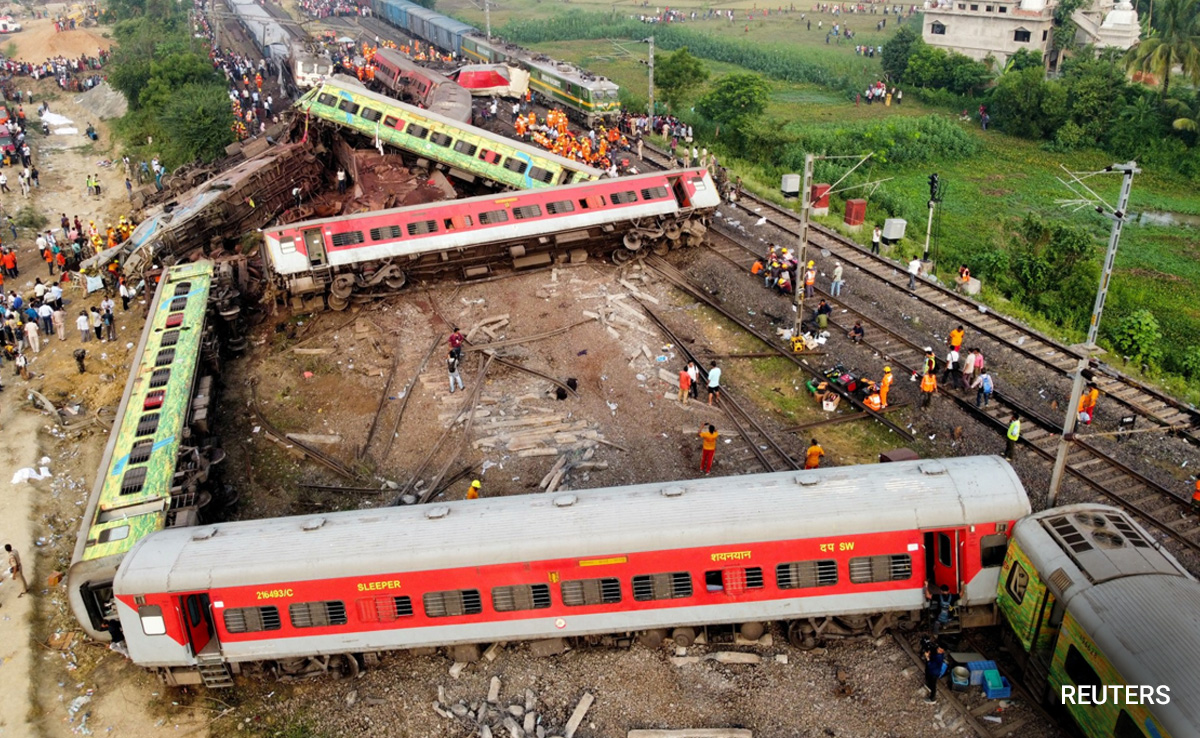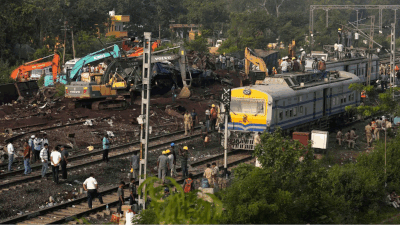‘Mistaken‘ Signal Suspected as Cause of Fatal Collisions in Odisha Train Accident. Tragedy struck in Odisha’s Balasore district as a three-train collision claimed the lives of 290 people and left 900 others injured. Preliminary investigations conducted by senior railway officials suggest that a “mistaken” signal may have led to the Howrah-Chennai Coromandel Express entering the loop line, where a goods train was parked a few meters ahead. The collision occurred late on Friday, and the report highlights that the line where the two trains collided was partially corroded.)
According to the report, which has been reviewed by HT, the Coromandel Express mistakenly entered the loop line near Bahanaga Bazar railway station in Balasore around 7 p.m. on Friday, following a signal that was later withdrawn. The report further notes that the Coromandel Express was traveling at a speed exceeding 120 km/h when it entered the loop line.
Coromandel Express Tragedy: ‘Mistaken’ Signal Blamed for Devastating Collision
The report, signed by four senior railway officials who inspected the accident site on Friday night, sheds light on the sequence of events. “After careful observation, we came to the conclusion that the signal was given and taken off for the main line for 12841 (Coromandel Express), but this train entered the loop line and dashed with the goods train which was on the loop line and derailed,” states the report.
Loop lines are additional tracks that divert from the main line and then rejoin it at a further distance. They serve as service lanes, enabling trains to make stoppages or perform overtaking maneuvers without affecting other trains’ movement.
The two-page handwritten report, compiled by senior railway officials JN Subudhi, RK Banerjee, RK Panjira, and AK Mohantu, was submitted on Saturday. However, it emphasizes that a comprehensive technical inquiry by the commissioner of railway safety is necessary to determine the exact cause of the accident. Responding to the incident, the Union railway ministry has initiated a high-level investigation.
The report draws on observations and records from the signal room at Bahanagar Bazar railway station to establish its findings. It also mentions that the Bangalore-Howrah Superfast Express (12864) passed through a different line, resulting in two of its coaches derailing and overturning.
According to the two-page report, 21 coaches of the Coromandel Express and two coaches of the Bangalore Superfast Express were derailed. The impact on the sleeper coaches was reportedly less severe compared to the air-conditioned bogies.
It is worth noting that the railway line where the accident occurred is not equipped with the railways’ anti-collision mechanism known as ‘Kavach’, which automatically applies the brakes if another train is detected on the same line.
Union railways minister Ashwini Vaishnaw expressed his determination to prevent such accidents from happening in the future. In the meantime, a detailed investigation will shed light on the precise circumstances that led to this devastating train collision.
A devastating train accident in Odisha’s Balasore district has claimed the lives of 290 individuals and left 900 others injured. Preliminary findings from senior railway officials suggest that a “mistaken” signal may have been the cause of the collision involving three trains: the Howrah-Chennai Coromandel Express, a goods train, and the Bangalore-Howrah Superfast Express. The incident occurred late on Friday and has raised concerns about the safety and maintenance of railway infrastructure.
Coromandel Express Tragedy: ‘Mistaken’ Signal Blamed for Collision with Goods Train
According to a report examined by HT, the Coromandel Express mistakenly entered the loop line near Bahanaga Bazar railway station in Balasore, believing it was the main line. The erroneous signal, which was promptly withdrawn, likely led the train onto the loop line, where it collided with a stationary goods train and derailed. The report highlights that the line where the collision occurred was partially corroded, raising questions about the maintenance and inspection of the tracks.
The report, signed by four senior railway officials who assessed the accident site, indicates that the Coromandel Express was traveling at a high speed of over 120 km/h when it entered the loop line. It suggests that the signal was initially set for the main line but was mistakenly applied to the loop line instead, leading to the tragic collision. The investigation team conducted a careful analysis of the events and concluded that the accident was a result of the “mistaken” signal.
Loop lines, which branch off from the main line and later rejoin it, serve as additional tracks for trains to make stoppages or overtake without disrupting other train movements. In this case, the Coromandel Express mistakenly entered the loop line, colliding with the goods train. The report highlights the urgency of addressing the underlying causes that led to this tragic incident.
The two-page handwritten report, prepared by senior railway officials JN Subudhi, RK Banerjee, RK Panjira, and AK Mohantu, was submitted on Saturday. However, the report emphasizes that a comprehensive technical inquiry led by the commissioner of railway safety is required to ascertain the exact cause of the accident and determine any additional contributing factors. Prompt action is necessary to prevent such accidents in the future and ensure the safety of passengers and railway staff.
The report draws on observations and records from the signal room at Bahanagar Bazar railway station to support its findings. It also mentions that the Bangalore-Howrah Superfast Express passed through a separate line during the incident, resulting in the derailment of two of its coaches.

